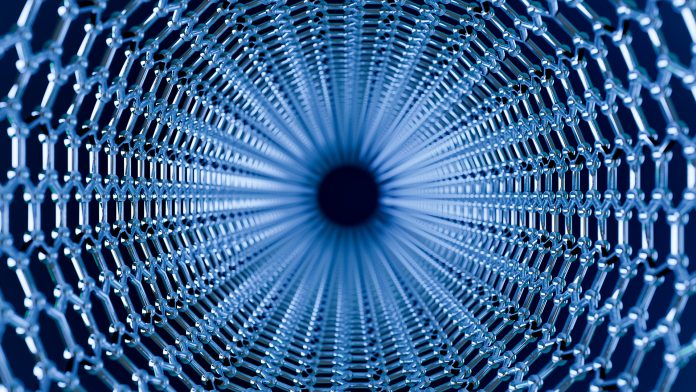Researchers from the University of Warwick and the University of Manchester have cracked the mystery of graphene’s permeability to protons.
A decade ago, scientists from the University of Manchester revealed graphene’s permeability to protons – the nuclei of hydrogen atoms.
The revelation that graphene is permeable to protons was unexpected and started a debate in the community. This is because it had long been theorised that it would take billions of years for a proton to permeate through graphene’s dense crystalline structure.
The discovery raised questions about the permeability of graphene, leading to suggestions that protons permeate through pinholes in the structure – not through the crystal lattice itself.
Now, in a paper published in Nature, a collaboration between the University of Warwick, led by Professor Patrick Unwin, and the University of Manchester, led by Dr Marcelo Lozada-Hidalgo and Professor Andre Geim, has reported ultra-high spatial resolution measurements of proton transport through graphene.
This proves that perfect graphene crystals are permeable to protons.
No graphene defects were detected by the team
The team used scanning electrochemical cell microscopy (SECCM) to measure minute proton currents collected from nanometre-sized areas. This enabled the researchers to visualise the spatial distribution of proton currents through graphene membranes.
The currents would be concentrated in a few isolated spots, if proton transport took place through some holes as expected.
However, no isolated spots were found. This ruled out the presence of holes in the graphene membranes.
Dr Segun Wahab and Dr Enrico Daviddi, leading authors of the paper, stated: “We were surprised to see absolutely no defects in the graphene crystals. Our results provide microscopic proof that graphene is intrinsically permeable to protons.”
The graphene permeability discovery reconciles the experiment and theory
The team found that proton currents accelerated around nanometre-sized wrinkles in the crystals. This discovery was unexpected.
The phenomenon occurs when the wrinkles stretch the graphene lattice, providing a larger space for protons to permeate through the pristine crystal lattice.
This observation reconciles the experiment and the theory of graphene permeability.
Dr Lozada-Hidalgo said: “We are effectively stretching an atomic scale mesh and observing a higher current through the stretched interatomic spaces in this mesh – this is truly mind-boggling.”
Professor Unwin commented: “These results showcase SECCM, developed in our lab, as a powerful technique to obtain microscopic insights into electrochemical interfaces, which opens up exciting possibilities for the design of next-generation membranes and separators involving protons.”
The discovery has the potential to assist green hydrogen production
Expensive catalysts and membranes which are currently used in hydrogen production, sometimes come with a significant environmental footprint.

These could be replaced with more sustainable 2D crystals to help reduce carbon emissions through the production of green hydrogen.
Dr Lozada-Hidalgo said: “Exploiting the catalytic activity of ripples and wrinkles in 2D crystals is a fundamentally new way to accelerate ion transport and chemical reactions.
“This could lead to the development of low-cost catalysts for hydrogen-related technologies.”





